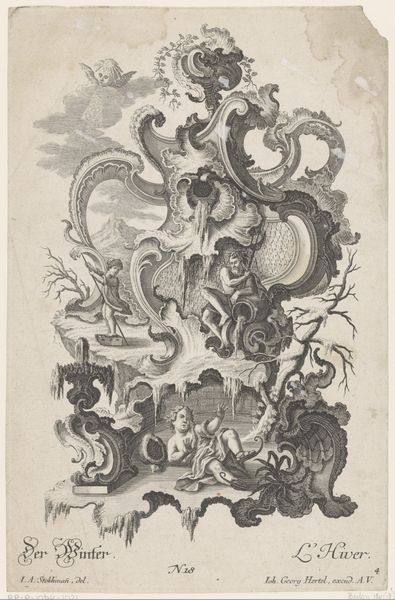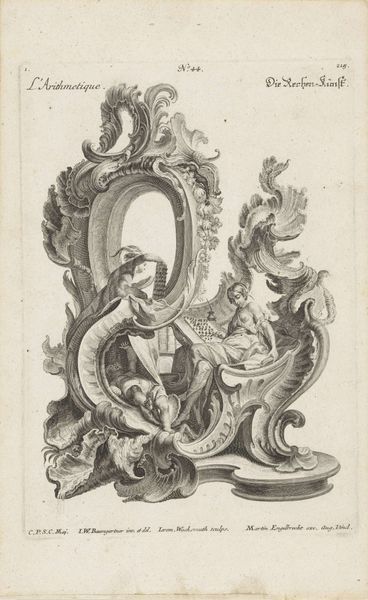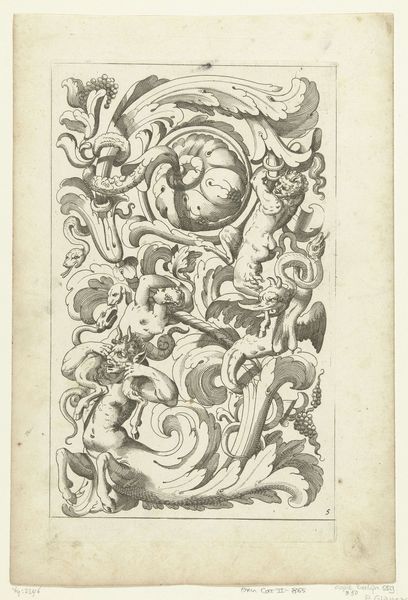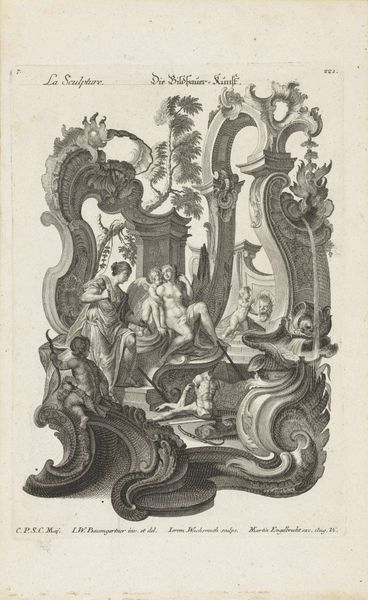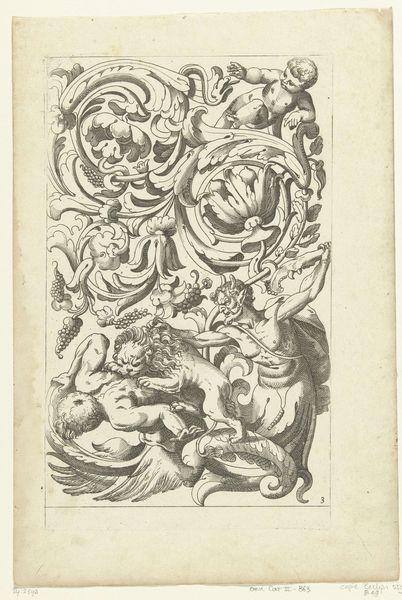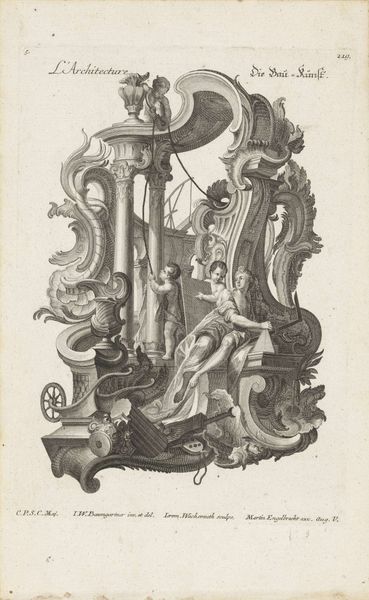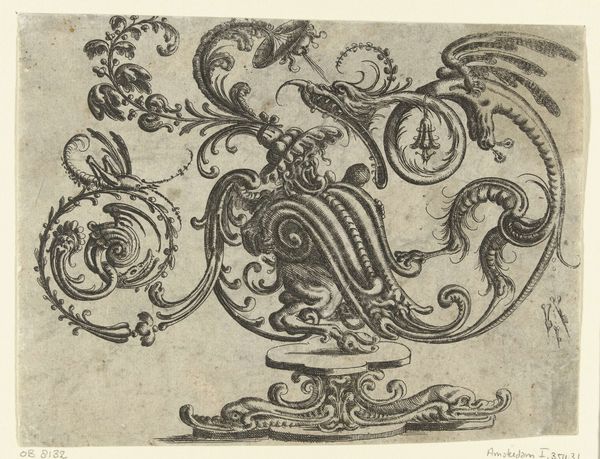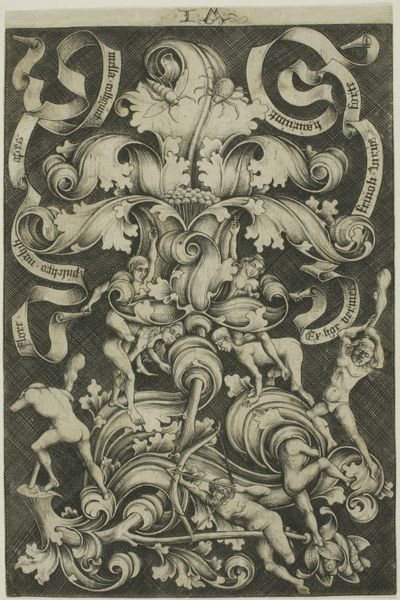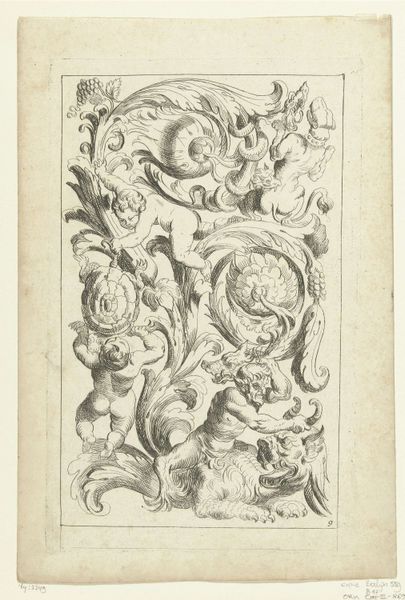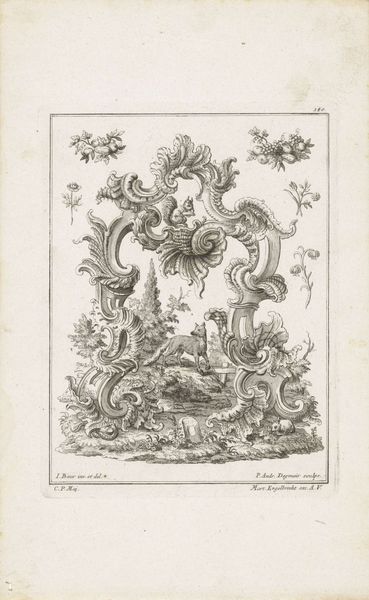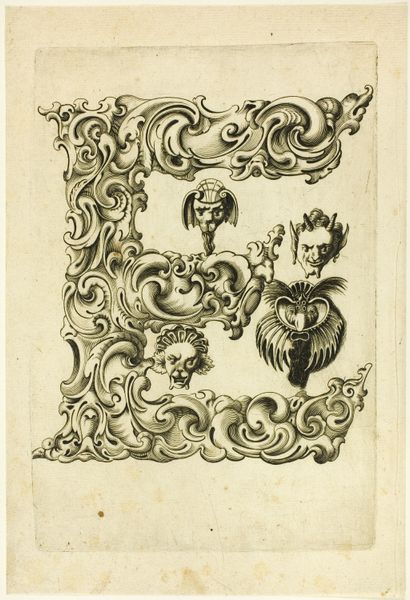
Rocaille met de personificatie van de Dichtkunst (Poëzie) 1719 - 1749
0:00
0:00
jeremiaswachsmuth
Rijksmuseum
engraving
#
allegory
#
baroque
#
figuration
#
line
#
history-painting
#
academic-art
#
engraving
Dimensions: height 282 mm, width 200 mm
Copyright: Rijks Museum: Open Domain
Jeremias Wachsmuth made this print, Rocaille with the Personification of Poetry, using etching. The lines are deeply bitten into the metal plate, holding plenty of ink to make a strong impression on the paper. The term "rocaille" refers to the ornate style popular in 18th-century Europe, and you can see that exuberance in the twisting, asymmetrical forms surrounding the central figure of Poetry. Look closely and you’ll notice how the hard lines of the etched plate have been used to render the soft, flowing quality of leaves and drapery. The process of etching is itself a kind of poetry. The artist carefully prepares the plate, covers it with a waxy ground, and then draws through the ground with a needle. Acid does the work of biting the design into the plate, a kind of alchemy turning the artist’s intention into a repeatable image. The printmaking process allowed Wachsmuth to disseminate this intricate design widely, demonstrating the increasing industrialization of art during this period. The labour involved in producing the print contrasts with the aristocratic associations of poetry, blurring the lines between fine art and craft.
Comments
No comments
Be the first to comment and join the conversation on the ultimate creative platform.
